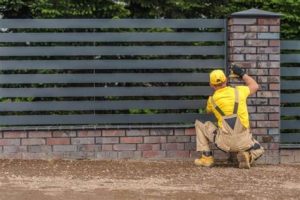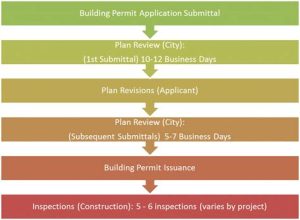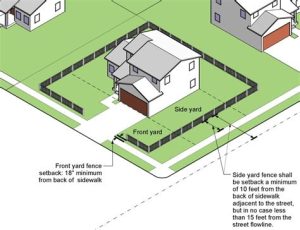Navigate local regulations and permit requirements with ease. Discover how to consult authorities, hire surveyors, and ensure proper documentation for your projects.Installing a fence is a fantastic way to enhance your property’s privacy and curb appeal, but navigating the complex world of fence installation permits can be daunting. Understanding local regulations is crucial, as these rules can vary significantly from one area to another. Failing to comply with permit requirements can lead to costly fines or mandated removal of your fence. This blog post aims to guide you through the essential steps to avoid permit issues during your fence installation process. We will explore the importance of researching permit requirements, consulting with local authorities, hiring a professional surveyor, and ensuring that all documentation is in order. With the right knowledge and preparation, you can enjoy a smooth installation experience and a beautiful new fence that meets all legal standards.
Understanding local regulations
When considering a fence installation, the first step is to thoroughly understand the local regulations that govern such projects. Each municipality has its own set of rules that dictate what you can and cannot do when it comes to erecting a fence. Not only can these regulations outline the allowed height and style of your fence, they may also specify the setback distance from property lines.
Before you start digging, it’s crucial to familiarize yourself with the zoning laws in your area. You can usually find this information on your local government’s website or by contacting the zoning department directly.
- Height restrictions – Many municipalities limit how tall a fence can be, especially in residential areas.
- Design guidelines – Certain communities may have aesthetic guidelines that must be adhered to.
- Property lines – Understanding where your property ends and your neighbor’s begins is crucial to avoid disputes.
Ignoring these local regulations can lead to future headaches, including fines, mandatory removal of the fence, or even legal disputes with neighbors. Doing your due diligence upfront is essential to ensure that your fence not only enhances your property’s aesthetic but also complies with local laws.
Researching permit requirements
When considering a fence installation, one of the first steps that should not be overlooked is researching permit requirements. This critical phase ensures that your project aligns with local laws and regulations, which can vary significantly from one area to another. Without proper permits, you could face delays, fines, or even the need to remove the fence altogether.
To start, consult your local government’s website or office for information on fence installation permits. Most municipalities have their policies clearly outlined, which may include the height restrictions, placement, and types of materials allowed.
- Property Lines: Understanding where your property ends and neighboring properties begin is essential.
- Height Restrictions: Many areas have maximum height limits for fences.
- Setback Requirements: Some locations require a specific distance from the property line to reduce disputes.
Failing to thoroughly research permit requirements can lead to issues later in your installation process. When in doubt, reach out to your local planning department. They can provide invaluable guidance on what is necessary for your fencing project.
Consulting with local authorities
When planning a fence installation, consulting with local authorities is a crucial step that cannot be overlooked. Local regulations surrounding fencing—such as height, material, and placement—vary significantly from one area to another. By engaging with your local government or zoning board, you can gain insights into the specific guidelines that apply to your project.
Start by visiting your local municipality’s website or office, where you can find information related to fence permits. Often, municipalities provide clear documentation outlining the requirements for fence installation, including any necessary approvals. Furthermore, local authorities can offer valuable advice on setbacks, easements, and neighborhood restrictions that may affect your fence.
Additionally, don’t hesitate to ask questions during your consultation. Whether it’s about additional fees, timelines for permit approval, or any other relevant concerns, local officials can provide clarity and help you avoid potential delays or issues during your fence installation.
Hiring a professional surveyor
When planning to install a fence, one of the most crucial steps is hiring a professional surveyor. A surveyor can help you understand property boundaries and ensure that your installation complies with local regulations. This step is vital not only for your peace of mind but also for preventing potential legal disputes with neighbors.
Professional surveyors utilize a variety of tools and techniques to pinpoint exact property lines, often employing advanced technology like GPS and CAD. This precision is essential when it comes to erecting any structure, including fences, as it helps to avoid common issues such as encroachment. By hiring a professional surveyor, you also gain valuable insights into any underground utilities that may be present, further reducing the risk of costly mistakes.
Furthermore, a qualified surveyor can assist in navigating the permit requirements and provide detailed reports that may be required during the permit application process. Their expertise can ultimately save you time and money by ensuring that your project aligns with legal standards and reduces the chances of having to make corrections later on.
Ensuring proper documentation
When it comes to successfully completing your fence installation, one of the most critical factors is ensuring proper documentation. Having accurate and complete documents can save you time, money, and headaches. Failure to provide the necessary paperwork can result in project delays or even costly fines.
Start by gathering all relevant documents, including property surveys, site plans, and existing property lines. These documents not only help you create a precise installation plan but also serve as proof of ownership. In many jurisdictions, you might be required to submit a permit application along with your documentation. Make sure to read the specific requirements for your local area to avoid any complications.
| Required Documents | Description |
|---|---|
| Property Survey | A detailed map defining your property’s boundaries. |
| Site Plan | A layout of the proposed fence installation. |
| Permit Application | Formal request for permission to install a fence. |
Additionally, keeping copies of all correspondence with local authorities can be immensely beneficial. This ensures you have a record of everything that has been discussed, which can help in resolving any disputes that may arise during your project.
Frequently Asked Questions
Why is it important to obtain a permit before installing a fence?
Obtaining a permit is crucial as it ensures that your fence complies with local building codes and regulations, which helps to avoid future legal issues and potential fines.
What are some common reasons for permit denial when trying to install a fence?
Common reasons for permit denial include non-compliance with local zoning laws, improperly submitted documentation, or proposed fence height and location that violate regulations.
How can I find out if I need a permit for my fence installation?
You can find out if you need a permit by contacting your local building department or checking their website, which usually provides guidelines on fence installation requirements.
What information should I gather before applying for a fence installation permit?
Before applying, gather information such as the fence’s proposed location, dimensions, materials, and any relevant property lines or easements.
Are there any exceptions to the permitting process for fence installation?
Yes, some areas may have exceptions for small fences or certain types of fences (like decorative ones) that do not require a permit, but this varies by location.
What steps can I take to ensure my permit application is successful?
To ensure success, make sure to provide accurate and complete information, follow all local guidelines, and consider consulting with a professional installer familiar with local regulations.
What should I do if my fence installation permit is denied?
If your permit is denied, review the reasons for denial, address any issues raised, and consider re-applying after making necessary adjustments or seeking clarification from the local authorities.



